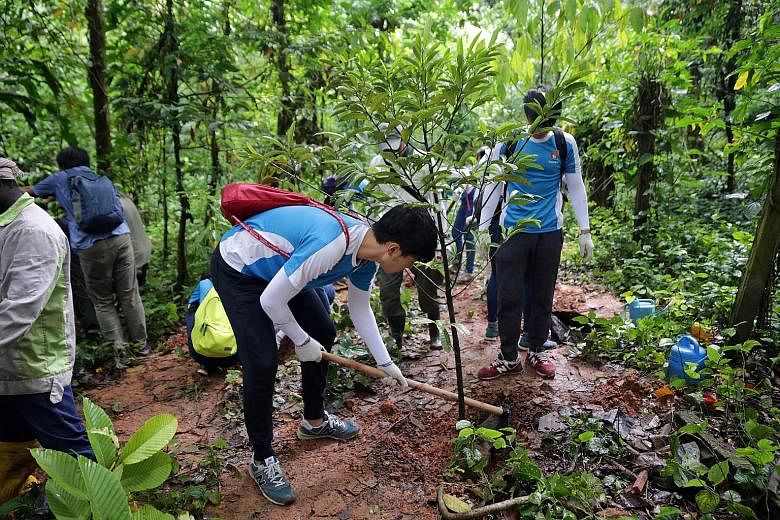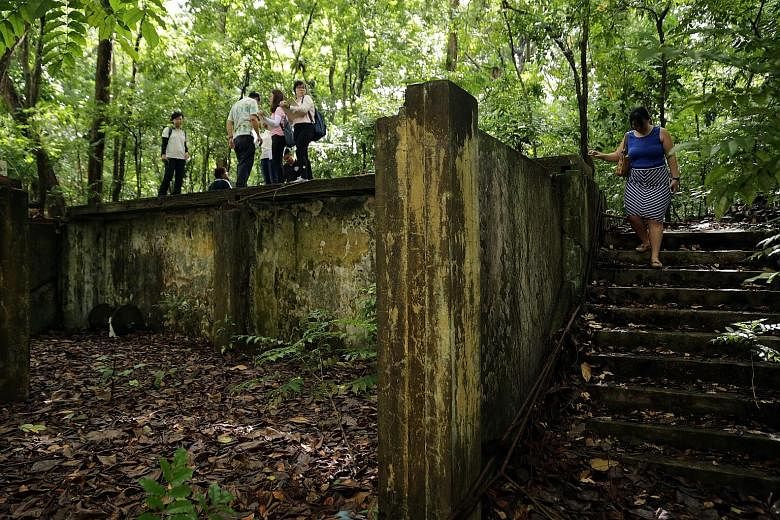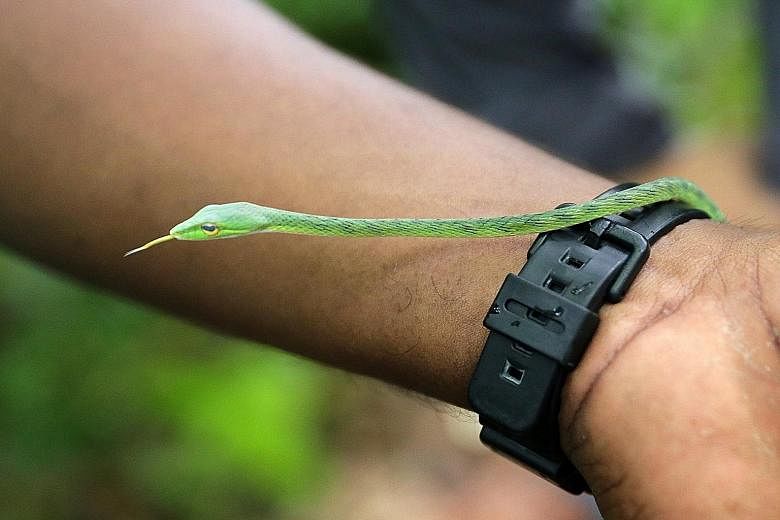A walk back in time awaits visitors to Thomson Nature Park when it opens to the public by end-2018.
When work on the 50ha nature park is complete, visitors can wander along its trails to find what remains of an old Hainanese village and rambutan plantation formerly located at the site - the first time that nature and history are meeting in plans for a nature park.
Besides viewing the old houses, staircases and village foundations as well as following the actual trails that the villagers used to walk along, visitors can also get up close with flora and fauna.
Mature trees more than 50 years old, for instance, can be found in the nature park, and keen-eyed visitors may spot animals such as the samba deer and leopard cat.
In unveiling plans for the Thomson Nature Park yesterday, the National Parks Board (NParks) said it will continue to enhance the forest habitat by planting native tree species there when work starts early next year.

The Thomson park sits just outside the Central Catchment Nature Reserve. It is one of four such parks announced by NParks in 2014 as part of its plan to extend the green buffer for Singapore's largest nature reserve.
The Thomson, Springleaf, Chestnut and Windsor nature parks aim to reduce visitorship pressure on the nature reserve, one of the last bastions of biodiversity in built-up Singapore. Plans for the other nature parks have already been announced, with Springleaf and Chestnut already welcoming crowds. Windsor is expected to open early next year.
Senior Minister of State for National Development Desmond Lee, who visited the site for the Thomson Nature Park yesterday, said the parks buffer the Central Catchment Nature Reserve from urban developments.
"Having these nature parks near but not within the reserve will allow members of the public to enjoy the outdoors with their families and that takes pressure off our very precious nature reserve," he said.
The reserve is home to animals such as the critically endangered Sunda pangolin, which has also been spotted at the site for the upcoming Thomson park.
In particular, the newest nature park is a key conservation site for the Raffles' banded langurs - the elusive, black-and-white cousins of the long-tailed macaques commonly seen in urban areas. This is because Thomson Nature Park sits next to Lower Peirce Reservoir in the Central Catchment Nature Reserve, and lies within the area where these animals forage for food.
Dr Adrian Loo, director of the terrestrial division at NParks' National Biodiversity Centre, said the board will work to conserve this species through methods such as planting known food trees of the Raffles' banded langur and ensuring that canopies of trees on both sides of nearby roads meet, to allow the arboreal creatures to move around.
Retired businessman Russell Ng, 67, who lives within walking distance of the upcoming nature park, said of the initiative: "I love it. My neighbours are birds, animals and insects, and being out in nature is one of the best ways to reduce stress."




